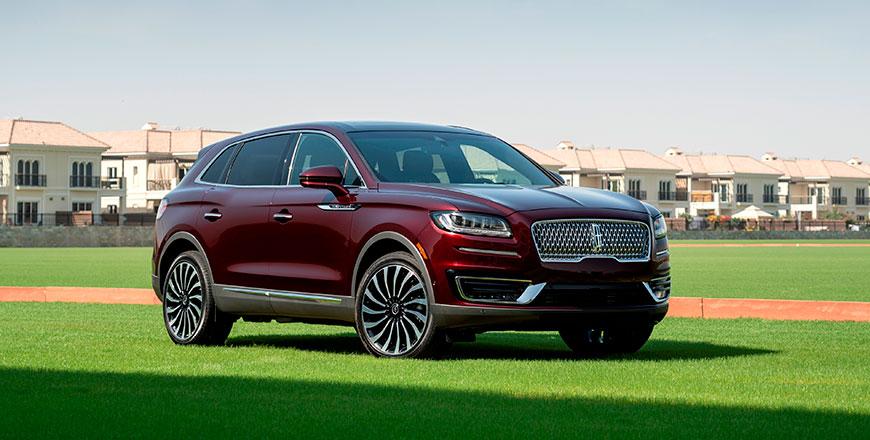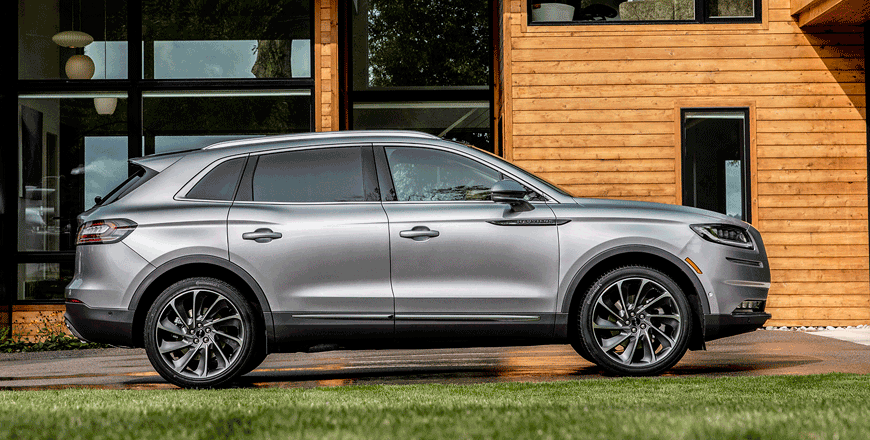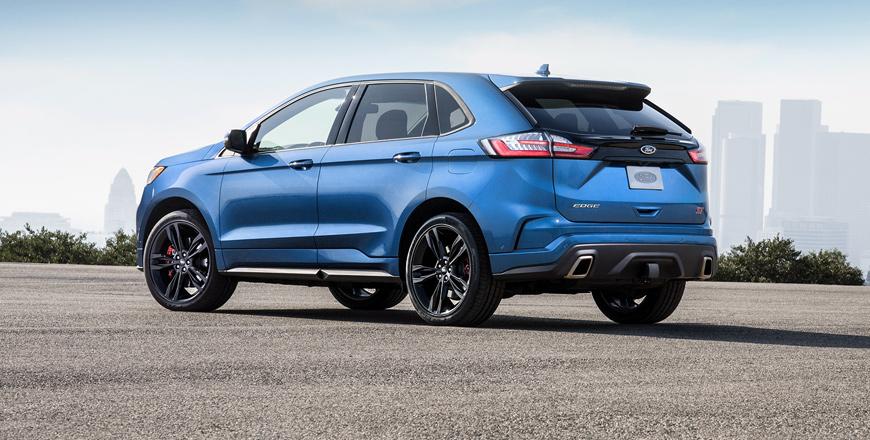You are here
Lincoln Nautilus 2.7T AWD: Navigating a new identity
By Ghaith Madadha - May 11,2020 - Last updated at May 11,2020

Photo courtesy of Lincoln
A quick, comfortable and highly well equipped midsize premium crossover utility vehicle (CUV) introduced last year, the Lincoln Nautilus is both successor and evolution of the Lincoln MKX, circa 2016.
The second to junior model in an expanding and revitalised model range now consisting primarily of SUVs and crossovers, the Nautilus ditches both its nominal predecessor’s nomenclature and ‘eagle wing’ grille design for a look and naming strategy more in tune with Lincoln’s emerging model range, and includes a number of tech, design and hardware improvements including a new 8-speed gearbox and down-sized entry-level engine option.
Sporty sensibility
Stylish and perhaps classier and more conservative in grille design than its somewhat more flamboyantly futuristic predecessor, the Nautilus is built on the same platform as the MKX and shares much in common. But nevertheless, it strikes a more mature and grounded chord with its new, broad and rectangular chrome mesh grille. Beyond its front fascia re-design and the adoption of a more expressive and emotive name, the Nautilus is otherwise little changed aesthetically. Comparatively compact, low and wide, the Nautilus’ dimensions have a sporty and seemingly ground-hugging demeanour, yet it enjoys generous ground clearance.
Styled to more closely resemble Lincoln’s flagship Continental saloon and Navigator SUV flagships, albeit with its own eager and pouncing sensibility, the Nautilus similarly adopts subtle improvements inside for a more upmarket cabin feel. Focusing on the passenger and driver experience inside, the Nautilus’ cabin is quiet and refined, utilising noise cancellation technology, while an optional panoramic roof provides and airy ambiance. Incorporating quality leathers and materials with uncomplicated, sleek and user-friendly layouts, the Nautilus also features vertical dash-mounted pushbutton gearbox controls coupled with steering-mounted paddle shifters for manual mode driving.
Urgent abilities
Offered with choice of two direct injection turbocharged engines including a 2-lire 4-cylinder entry-level version, the driven range-topping Nautilus is powered by a twin-turbo 2.7-litre V6. Potent and efficient, the Nautilus 2.7T’s engine is inherited from its MKX predecessor and proves just as prodigious, eager and responsive here. Developing 335BHP at 5,500rpm and 380lb/ft torque at 3,250rpm the 2-tonne all-wheel-drive Nautilus digs and darts through 0-100km/h in approximately 6.5-seconds along to an urgent yet subdued snarling soundtrack. Fuel economy is meanwhile estimated at around 11.2l/100km on the combined cycle.
Eager off the line with its four-wheel-drive traction and quick spooling turbos courtesy of short gas flow paths, the Nautilus 2.7T almost all but eliminates turbo lag and sets off with confident alacrity. A star among Ford and Lincoln engines, the Nautilus’s twin-turbo 2.7 pulls hard and energetically from low-end, and builds urgently to a muscularly flexible mid-range, helped by a smooth and quick-shifting 8-speed automatic gearbox. Versatile in mid-range, the Nautilus overtakes effortlessly and accumulates speed with verve, but nevertheless remains eager and willing to its comparatively high 6,500rpm rev limit.
Confidence and comfort
Responsive to throttle input for accurate control and with an intense power build-up underwritten by a rich and broad layer of torque, the Nautilus delivers a distinctly sporty experience coupled with a luxurious ambiance in a relatively un-sporty segment. If not a dedicated sports CUV, the Nautilus nevertheless turns into corners tidily, with its 265/40R21 tyres and wide track providing reassuring road-holding and stability. Meanwhile its disconnectable all-wheel-drive system allocates power to the rear when needed for additional traction, and its’ speed sensitive steering is quick and precise with decent road feel for its class.
Direct, responsive and with a quick ratio, the Nautilus’ steering allows one to keep both hands on the wheel in most situations, and is offered with an optional evasive steering assistance and forward sensing safety system to avoid collisions. Confident, poised and stable at speed, the Nautilus is well refined from noise, vibration and harshness, and is available with adaptive dampers in 2.7T specification, which serve to tighten through corners to tautly contain body lean. Adaptive dampers meanwhile also provide a comfortably smooth ride on straights, despite vast optional 21-inch alloy wheels and low profile tyres.
Classy and contemporary
Supple over imperfections in town and on highway bar the sharpest of cracks and bumps, the Nautilus is a forgiving and comfortable ride, and feels fluent and settled with good rebound control over dips and crests. Refined, luxuriously appointed with soft textures and surfaces, the Nautilus is well-organised inside, and features clear instrumentation, good front visibility and comfortable, supportive and 22-way adjustable front seating. Spacious inside, the nautilus can accommodate 1053-litres of luggage when loaded to the roof, which expands up to a cavernous 1948-litres with the rear seats folded.
Setting its stall in the more individualist end of the premium segment, not too unlike Audi or Saab would have been positioned not too long ago, the Nautilus has a clean and contemporary style inside and out. Meanwhile, standard equipment is generous, and optional features are extensive and include driver assistance systems such as stop/go adaptive cruise control, lane-keeping and centring assistance, blind-spot warning, cross-traffic alert system for when backing out of a parking spot, and pre-collision assistance with pedestrian detection. Also available are a 360° camera and parking assistance system that helps to manoeuvre into spaces.
Specifications
- Engine: 2.7-litre, transverse, twin-turbocharged V6-cylinders
- Bore x stroke: 83 x 83mm
- Compression ratio: 10:1
- Valve-train: 24-valve, DOHC, direct injection
- Redline: 6,500rpm
- Gearbox: 8-speed automatic, four-wheel-drive
- Gear ratios: 1st 4.48; 2nd 3.15; 3rd 2.87; 4th 1.84; 5th 1.41; 6th 1.0; 7th 0.74; 8th 0.62
- Reverse / final drive: 2.88 / 3.65
- Power, BHP (PS) [kW]: 335 (340) [250] @5,500rpm
- Specific power: 124.3BHP/litre
- Torque, lb/ft (Nm): 380 (515) @3,250rpm
- Specific torque: 191.1Nm/litre
- 0-100km/h: approximately 6.5-seconds (est.)
- Fuel consumption, combined; 11.2-litres/100km (estimate)
- Fuel capacity: 70-litres
- Length: 4,826mm
- Width: 1,999mm (mirrors folded)
- Height: 1,681mm
- Wheelbase: 2,850mm
- Track, F/R: 1,646/1,643mm
- Headroom, F/R: 1,013/995mm
- Legroom, F/R: 1,087/1,005mm
- Shoulder room, F/R: 1,496/1,498mm
- Ground clearance: 198mm
- Cargo volume min/max (to roof): 1,053-/1,948-litres
- Kerb weight: 2,000kg (estimate)
- Weight distribution, F/R: 60/40 per cent
- Towing capacity: 1,587kg
- Suspension, F/R: MacPherson struts / integral link
- Steering: Electric-assisted rack & pinion
- Steering ratio: 17.7
- Turning circle: 12-metres
- Brakes: Ventilated discs, 345mm
- Tyres: 265/40R21
Related Articles
A sportily swift and stylish compact crossover SUV that first arrived in 2018, the Nautilus acted as both successor to, and evolution of the
Launched as a 2016 model, the second generation Lincoln MKX is part of a redoubled effort to revitalise the traditional American luxury make
First arriving as a 2019 model and now updated with new colours and equipment packages for 2020, the Ford Edge ST is the first Crossover SUV


















